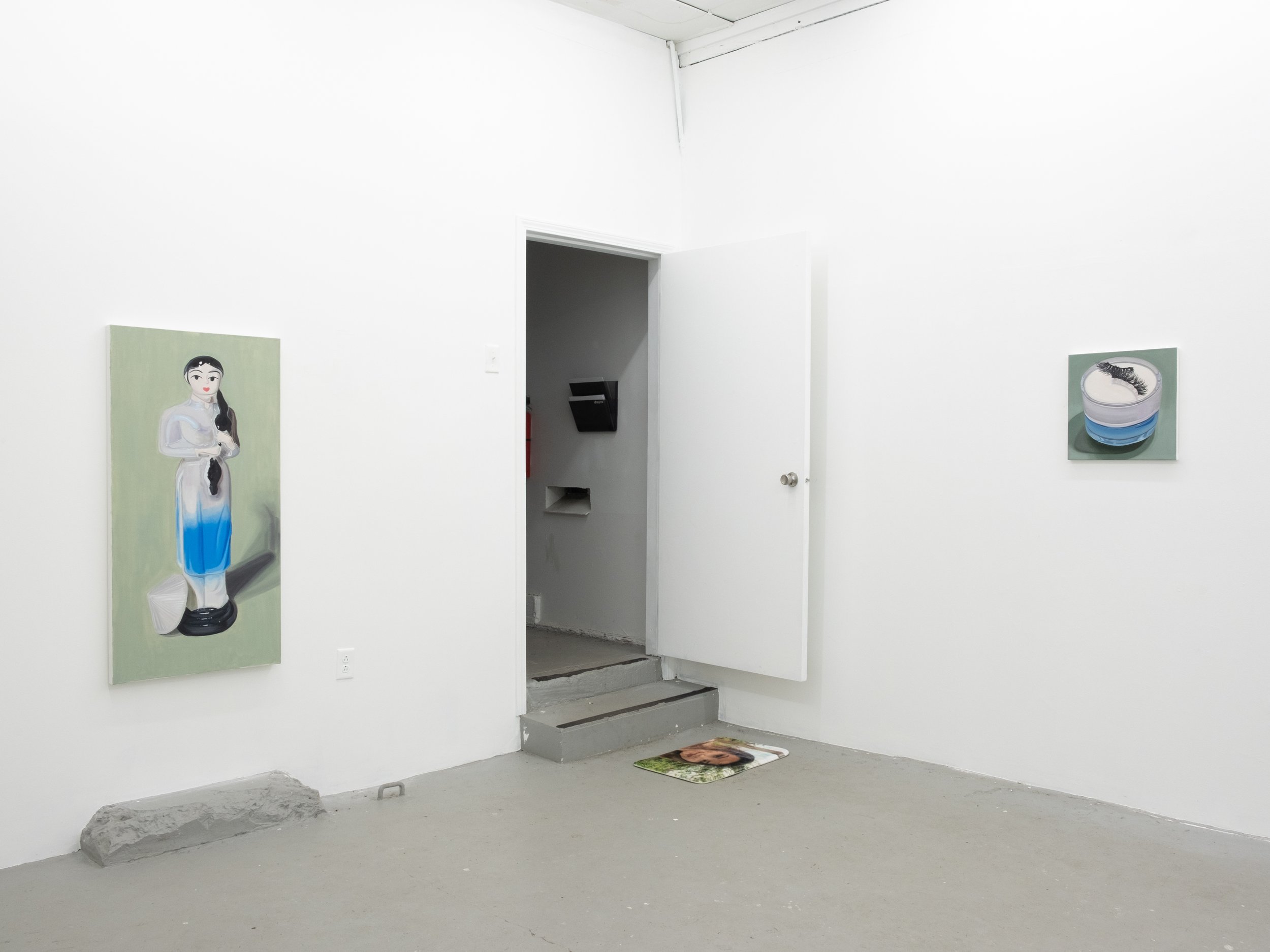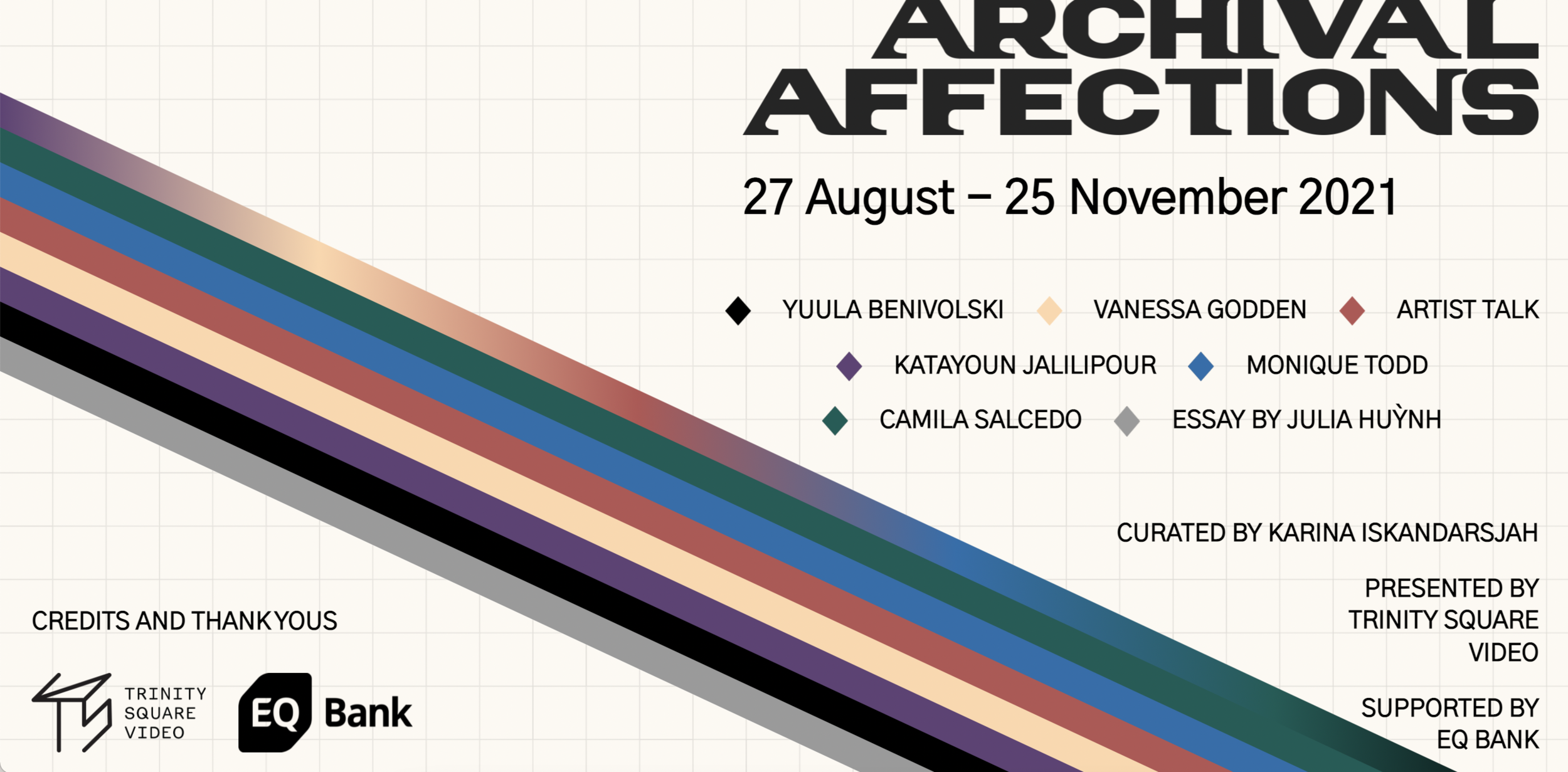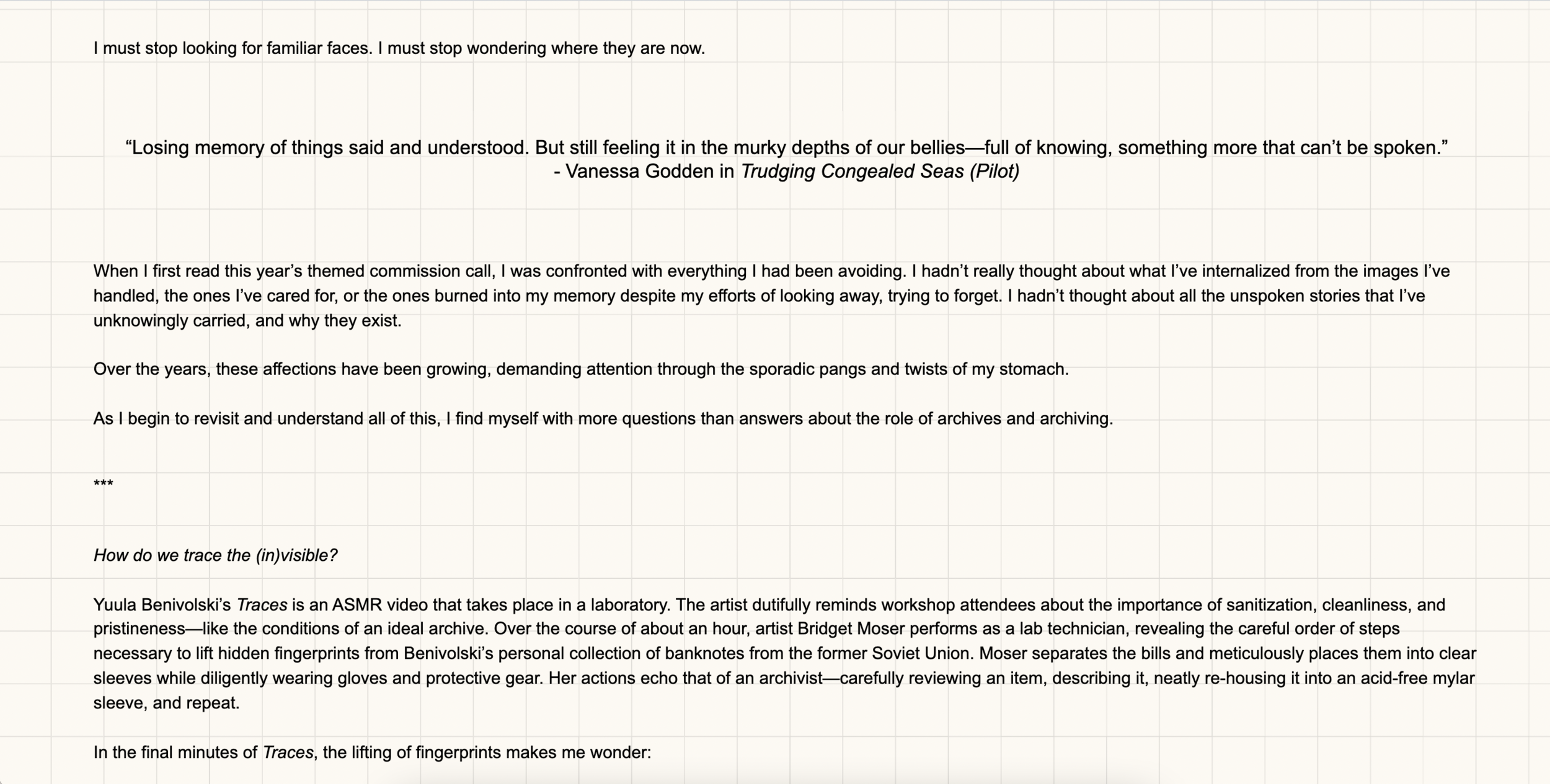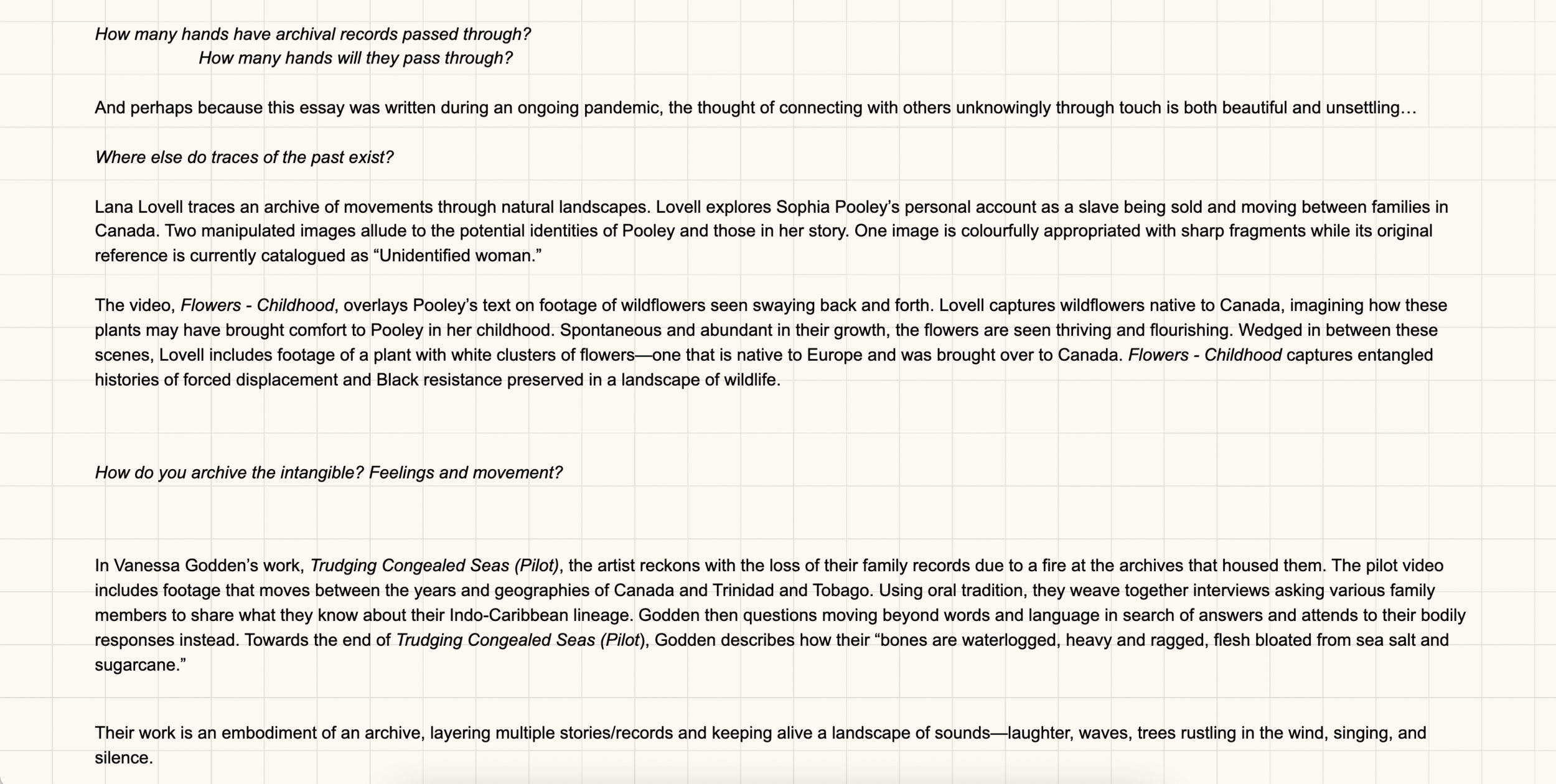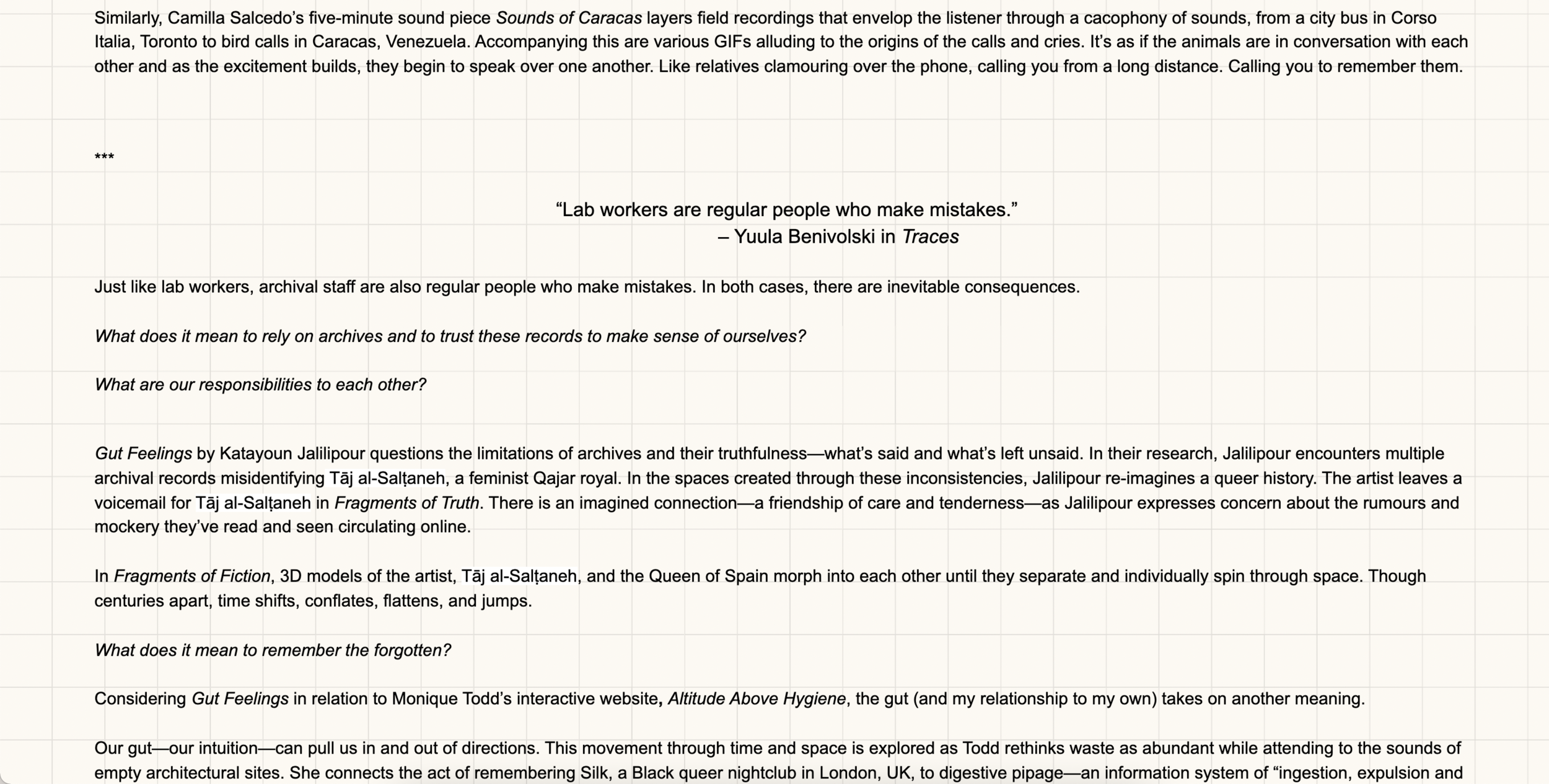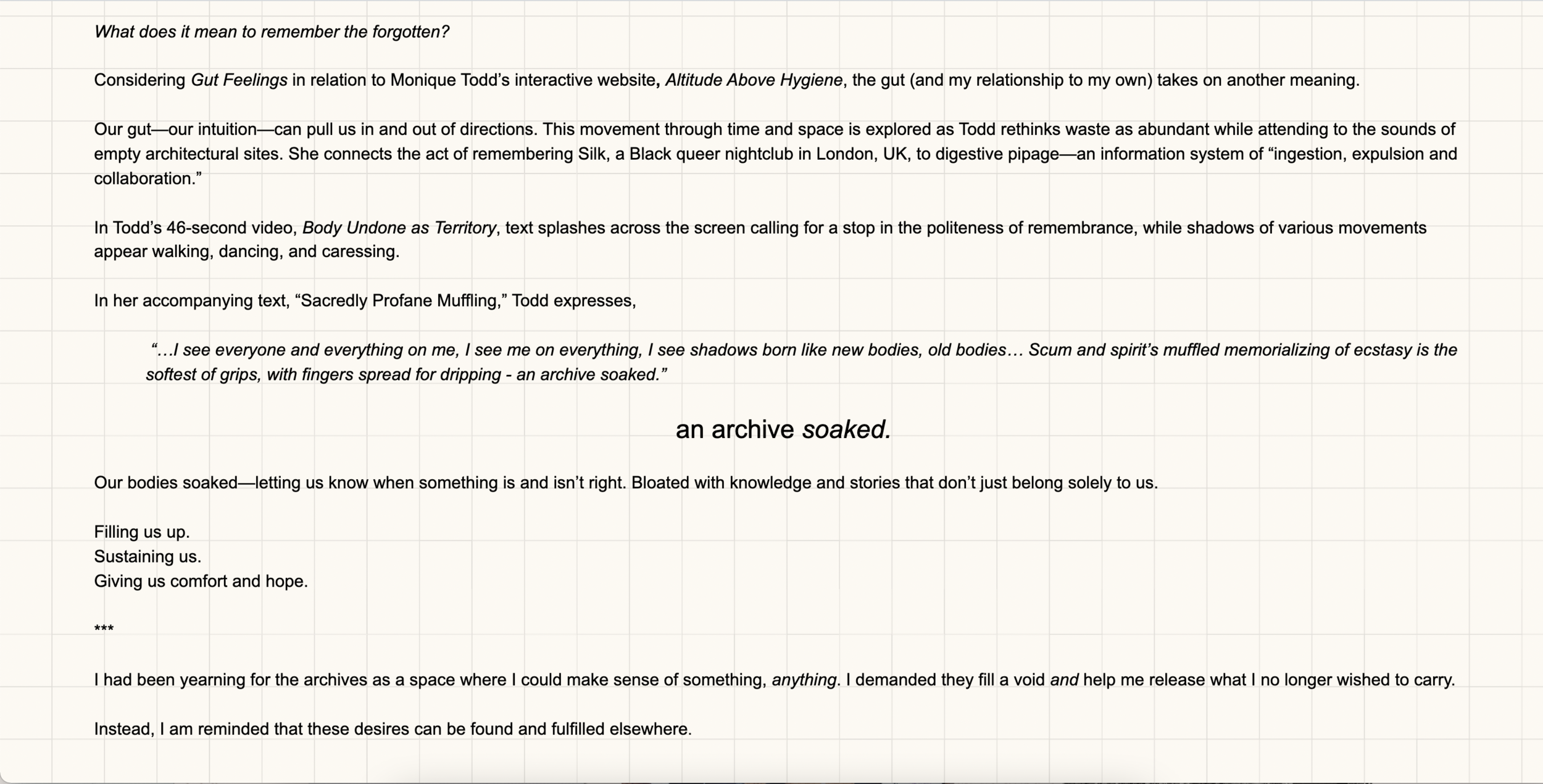Research & Writing
Installation shot of Object of Affection at Afternoon Projects. Photograph by Benny Xu.
Object of Affection
TW: Anti-Asian hate & femicide
How does one contend with carrying the weight of what it means to be an Asian woman at a time where anti-Asian hate is hypervisible?
Text for Hau Pham’s solo exhibition at Afternoon Projects is available to read here.
Care During COVID-19: A Virtual Asian American And Pacific Islander Photovoice Project
A co-authored manuscript led by Julia Huỳnh, Phuc Duy Nhu To, Cevadne Lee, Thuy Vo Dang, Judy Tzu-Chun Wu, and Sora Park Tanjasiri, published in AAPI Nexus Special Issue: Policy, Practice and Community.
abstract: The COVID-19 pandemic coincided with rising anti-Asian rhetoric and violence fostered by government leadership. The Visualizing Our Identities and Cultures for Empowerment project based at the University of California, Irvine trained student researchers in the photovoice methodology to document the experiences of Asian Americans and Pacific Islanders during the COVID-19 pandemic. Described as “ethical photography for social change,” photovoice seeks to democratize knowledge production and to enact social justice. This approach of community participatory action research and community-centered archival creation could serve as a model for other Asian American Native American Pacific Islander Serving Institutions that embrace the mission of “service” as well as “empowerment” and “care” for marginalized communities.
Available to read online here.
Through Our Eyes, Hear Our Stories: A Virtual Photovoice Project to Document and Archive Asian American and Pacific Islander Community Experiences During COVID-19
A co-authored manuscript led by Phuc To, Julia Huỳnh, Judy Tzu-Chun Wu, Thuy Vo Dang, Cevadne Lee, and Sora Park Tanjasiri, published in the Health Promotion Practice Special Issue: Photovoice: The Little Method That Could Change the World.
abstract: Through Our Eyes, Hear Our Voices is a virtual photovoice project that documents the impact of COVID-19 on Asian American and Pacific Islander (AAPI) communities. Quantitative studies on the disproportionate impact of COVID-19 are still emerging, but they do not reveal qualitative experiences of a racialized pandemic exacerbated by political leaders labeling it “China virus.” As a qualitative participatory action research approach, photovoice is an ideal archival and pedagogical tool to capture the lived experience of AAPI communities. However, we had to adapt photovoice to a virtual research environment. We did so by adopting a variety of digital learning and information sharing platforms. In addition, we enlisted community-based organizations who are providing essential services for underrepresented communities to serve as research mentors for university student researchers. Finally, given the historic nature of the pandemic and the underrepresentation of AAPI experiences in mainstream archives, we emphasized the importance of students as co-producers of archival knowledge.
This co-authored manuscript was recently selected as one of the two 2022 Sarah Mazelis Health Promotions Practice Papers of the Year. Available to read here and listen to the podcast episode here featuring Phuc To, Cevadne Lee, and Dr. Judy Tzu-Chun Wu discussing our manuscript.
Archival Affections Essay
A commissioned essay for the online exhibition, Archival Affections, curated by Karina Iskandarsjah presented by Trinity Square Video and supported by EQ Bank.
Performing and Preserving Memories: Vernacular Photographs in the South Vietnamese Diaspora
abstract: This thesis explores how photographs from 1980-1995 of the South Vietnamese diasporic community in Orange County, California communicate selective ideas about exilic identity and memory following the militarized migration of this refugee community fleeing war. Focusing on two case studies drawn from photographs included in the Paul Tran Files and the Project Ngọc Records, the thesis investigates the (in)visible desires of the community and how such desires are (re)produced and mediated through images. Vernacular photographs of commemorative events produced by the community are crucial to our understanding of the visual tropes used to anchor the Vietnamese diasporic identity. Additionally, the photographs themselves function as a means of contesting nation building and for intergenerational transmission of memory. Just as importantly, an examination of the photographs’ multi-temporal and serial qualities reveals how youth are culturally disciplined through the gendered labour of memory keeping.
Thesis presented to X University in partial fulfillment for the degree of Master of Arts in Photography Preservation and Collections Management.
Navigating Multiple Histories & Discrepancies in Understanding Nineteenth Century Photography in Việt Nam
abstract: Photographs of nineteenth century Việt Nam were often the work of French photographers conducting ethnographic and geographic surveys. Their use of photography as a pseudoscience resulted in ethnographic portraits used to study and categorize Vietnamese peoples as “Other.” To disrupt this visual representation, this working paper investigates the potential opportunities and limitations of establishing a historical account of nineteenth century Vietnamese photography. Challenges that arose in my research include: (1) significant discrepancies between the French and Vietnamese conflicting accounts of photography in Việt Nam; (2) further complexities in the Vietnamese national narrative; (3) my reliance on the accessibility of digital collections, language barriers, and geographic limitations. As a result, my work critiques and investigates how these spaces purport and perpetuate a persistent colonial depiction of nineteenth century Việt Nam.
Paper presented at un-histories: art and the unconcluded at OCAD University in Toronto, ON, March 10, 2018.
Presentations
Paris By Night DVDs: Dominating the Vietnamese Diaspora (DVD)
Through methodologies stemming from diaspora studies, transnational studies and auto ethnography, I explore my family’s growing collection of Paris By Night DVDs produced by the studio Thuy Nga. How did we collect them? Why do we have them? What does it mean to have them in our home? I then investigate the Vietnamese musical entertainment series influence on the Vietnamese diasporic community in its collective and individual formation of identity and assertion of “Vietnamese-ness.”
Nationalism and Photography
Presentation for “History of Photography II” graduate course.
Summarizing the following texts: “The Dilemma of Photography in Canada” (Falk, 1979), “Imaged Communities: Putting Canadian Photographic History in its Place” (Langford, 2015) and “Photography in Canada 1960 to 2000” Kunard, 2016) I facilitated a graduate seminar contextualizing the difficulties of creating a linear narrative of the history of photography in Canada.
